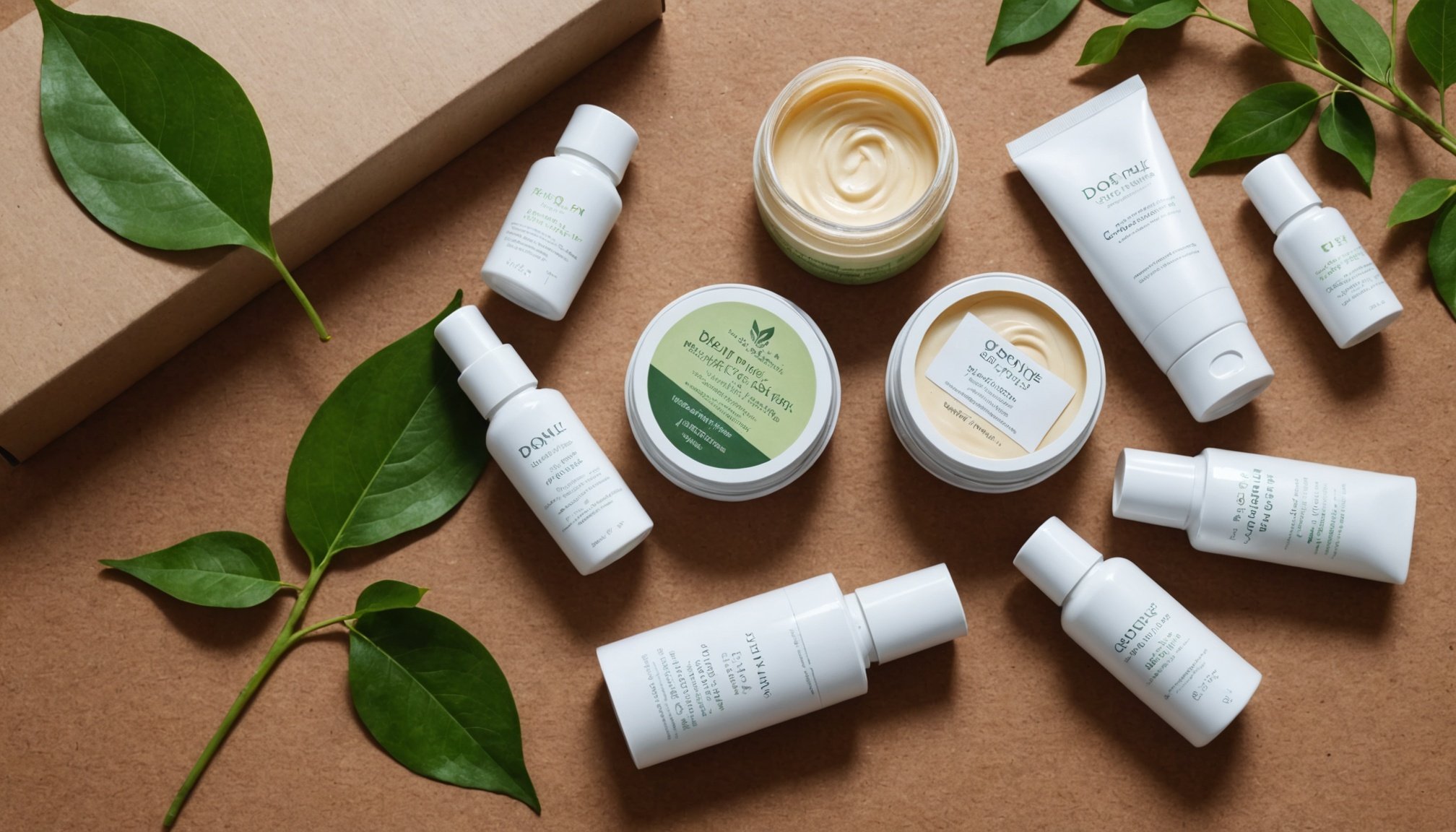Eco-Friendly Ways to Dispose of Skincare Packaging: Sustainable Practices for a Greener Future
In the ever-evolving world of skincare, the focus on sustainability has become a critical aspect of the industry. The beauty industry, particularly the skincare segment, is grappling with the daunting task of reducing its environmental impact, and one of the key areas of concern is the disposal of skincare packaging. Here, we delve into the eco-friendly ways to dispose of skincare packaging, exploring sustainable practices that are shaping a greener future for the beauty industry.
Understanding the Problem: The Environmental Impact of Skincare Packaging
The beauty industry, including skincare, produces an astonishing amount of waste. According to the British Beauty Council, only 9% of cosmetic packaging is recycled, with the majority ending up in landfills or oceans.
This might interest you : Unlocking Creativity and Focus: The Best Aromatherapy Scents for Your Home Office Environment
The Statistics
- 120 million units of packaging: The global beauty industry produces over 120 million units of packaging each year, accounting for 70% of the industry’s waste.
- 9% recycled: Only 9% of this packaging is recycled, leaving a staggering 95% to be discarded.
- Hard-to-recycle materials: Many beauty products, such as mascara tubes, eyebrow gels, and lipstick containers, are made from materials that cannot be recycled through traditional curbside recycling programs.
The Need for Change
Given these statistics, it is clear that the current linear economy model of “take-make-dispose” is unsustainable. Skincare brands and consumers alike are recognizing the need for a shift towards more circular and sustainable practices.
Sustainable Packaging Solutions
Several innovative approaches are being adopted to make skincare packaging more eco-friendly.
In the same genre : Mastering Intermittent Fasting: A Busy Woman”s Ultimate Guide to Seamless Integration into Her Lifestyle
1. Use of Recyclable Materials
One of the most straightforward ways to reduce waste is by using recyclable materials for packaging. For instance, switching from polythene mailing bags to those made from sugarcane, which are 100% recyclable, can make a significant difference.
Example:
- Sephora and Ulta Beauty: These retailers are working with companies like EcoEnclose to replace non-recyclable packaging with widely recyclable options. This includes converting paper-based packaging and thin film packaging to 100% recycled materials.
2. Refillable Packaging
Refillable packaging is emerging as a promising solution to reduce waste in the skincare industry.
Types of Refillable Packaging:
- Bottle-in-a-bottle: This involves using a durable container with replaceable cartridges. While it offers a mess-free refill experience, it can sometimes exacerbate waste if the refills are not recycled properly.
- Example: Tata Harper’s Waterlock Moisturiser uses replaceable pots that click into an airtight jar to prevent contamination.
- Refill Pouches or Packs: These are single-use pouches that reduce plastic use significantly. For example, L’Occitane’s eco-refill pouches use 85% less plastic than single-use bottles.
- Challenge: Multi-laminate pouches can be difficult to recycle. Brands like Foile are addressing this by implementing packaging loop and returns programs.
- Returnable Packaging: This model, often referred to as the “milkman model,” involves sending back empty containers to the brand for cleaning and reuse. Brands like Raaie and Beauty Kitchen are pioneering this approach.
Recycling Programs for Hard-to-Recycle Materials
Many skincare products are made from materials that are difficult to recycle through traditional means. Here are some initiatives that are tackling this issue.
recycle:me by THG
THG (The Hut Group) has launched the recycle:me program, which focuses on recycling hard-to-recycle beauty and cosmetic packaging. Here’s how it works:
- Scan and Return: Consumers scan empty products using an app and arrange for a free doorstep collection or drop-off at one of over 14,000 locations.
- Recycle: The collected materials are processed by MYGroup, a UK-based recycling partner, and turned into durable plastic boards or other reusable products.
- Reward: Consumers earn rewards to spend at LOOKFANTASTIC or Cult Beauty for participating in the program.
Accepted Items:
- Makeup and skincare jars, tubs, pots, tubes, pallets, and compacts
- Mascara, eyebrow gels, and eyeliners
- Lipsticks, lip stains, and lipliners
- Samples, refill pouches, face and body mask packets, sachets, minis, and travel sizes
- Makeup brushes, makeup sponges, hairbrushes, and combs
Practical Insights and Actionable Advice
For both consumers and brands, adopting sustainable practices requires a combination of awareness, commitment, and innovation.
For Consumers:
- Choose Brands with Sustainable Packaging: Opt for brands that use recyclable materials and offer refill options.
- Participate in Recycling Programs: Use programs like recycle:me to ensure that your hard-to-recycle beauty products are properly recycled.
- Reduce Single-Use Products: Prefer products with minimal or biodegradable packaging.
For Brands:
- Adopt Circular Business Models: Transition from linear to circular business models that emphasize reuse and recycling.
- Invest in Sustainable Materials: Use 100% recycled materials for packaging and explore biodegradable alternatives.
- Educate Consumers: Raise awareness about the importance of sustainable packaging and provide clear guidelines on how to recycle or refill products.
Table: Comparing Different Types of Refillable Packaging
| Type of Refillable Packaging | Description | Advantages | Challenges |
|---|---|---|---|
| Bottle-in-a-bottle | Durable container with replaceable cartridges | Mess-free refill experience | Can exacerbate waste if refills are not recycled |
| Refill Pouches or Packs | Single-use pouches for bulk refills | Reduces plastic use significantly | Difficult to recycle multi-laminate pouches |
| Returnable Packaging | Containers sent back to the brand for cleaning and reuse | Reduces waste, provides full product life cycle data | Reliant on consumer return, costly to implement |
Quotes from Industry Experts
- Aisling Connaughton, Co-founder at Cyd Connects:
“Beauty brands are recognising that our current economic system of a linear economy—the ‘take-make-dispose’ model—is simply unsustainable.” - Yang, as quoted in Good On You:
“If the refill itself is packaged heavily or could have been used as a standalone product, a refill product can actually generate more waste and shipping footprint rather than reduce packaging.”
The journey towards sustainable skincare packaging is multifaceted and requires a collective effort from brands, consumers, and policymakers. By adopting eco-friendly packaging solutions, participating in recycling programs, and promoting circular business models, we can significantly reduce the environmental impact of the beauty industry.
As consumers become more aware of the environmental consequences of their purchasing decisions, the demand for sustainable packaging will continue to grow. Brands that innovate and invest in sustainable practices will not only contribute to a greener future but also build a loyal customer base that values their commitment to sustainability.
In the end, the future of skincare must be circular, and it starts with how we choose to package, use, and dispose of our products. By working together, we can create a more sustainable and environmentally friendly beauty industry for generations to come.











